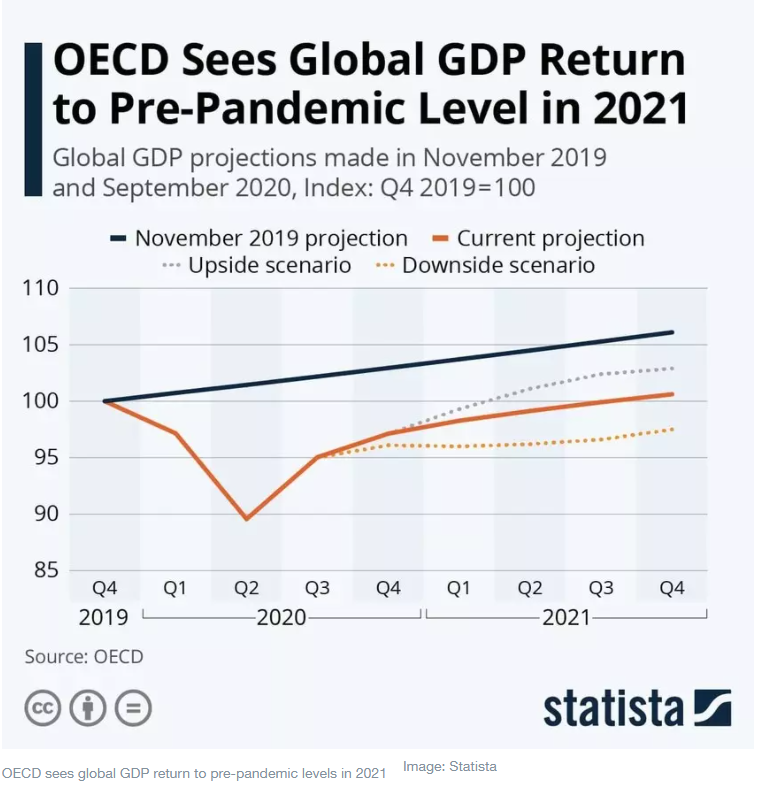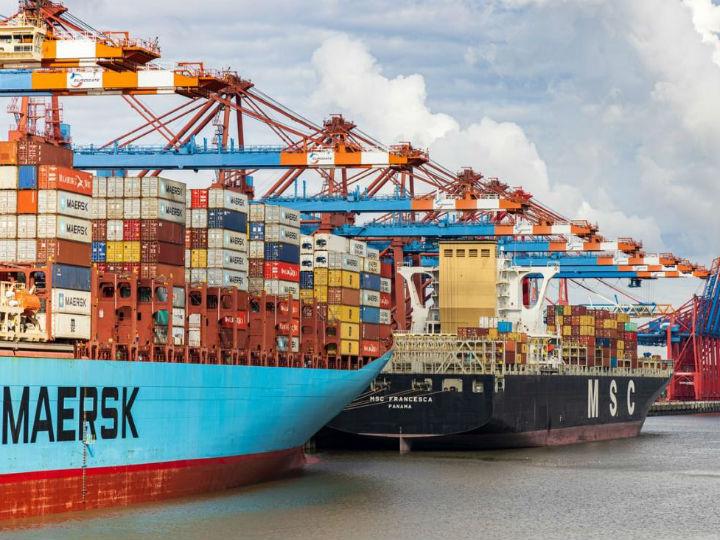by Bruce Spear, Patrick Daoust and Edwin Anderson*
You can see it in the airlines removing scheduled flights, factories cancelling shifts, restaurants closing again and movie theatres shuttering once more.
Recurring coronavirus outbreaks are creating an unprecedented stop-and-start economy that is reordering companies into two divergent camps: highly nimble businesses versus those left exposed by vicious, rolling cycles of unpredictability. Millions of companies in the US and Europe at the mercy of these outside forces are now reliant on government aid to remain solvent. Twice as many companies globally defaulted on their debt payments in July of this year than in all of 2019.
This coronavirus-driven recession is forcing companies to adapt to these sudden, jarring fits and starts. Companies who are successfully navigating the current jagged environment are not just considering how long and deep global and national recessions might last; they are abandoning traditional ways of forecasting, restructuring and partnering to customize their responses to slowdowns and pickups by country and by city.
Here’s what is working:
Forecasting with new leading indicators
Companies have experienced economic zigzags before, but this period is different. Conventional notions of what could signal a rise in demand are either inadequate or ineffective. Traditional econometric modelling and time-series analyses often prove useless in the current environment. Managers who look to traditional leading economic indicators or estimate expected rises in disposable income are constantly behind the curve.
Companies are having to rely on a new set of leading indicators. Examples include government-imposed restrictions, the degree to which people are wearing masks, sheltering in place (again), mobility (based on mobile phone locations), the availability of coronavirus testing and weather forecasts.
Armed with these new datasets, companies can better anticipate when and where demand will return and for how long, often by applying machine learning. Auto-makers plan to mitigate the impact of anticipated supply chains breakdowns, while banks can predict spikes in credit losses more precisely.
Even in countries where data is scarce and often unreliable airlines can estimate the demand for business travel by taking a cue from greenhouse gas emissions that indicate whether factories are running again or starting to slow down.
Restructure to improve flexibility
To capitalize on these predictions, companies must examine their restructuring programmes through a lens that focuses on increasing flexibility alongside cutting capacity and costs. The typical approach of slashing costs as much as possible can backfire in the current pandemic recession, as it leaves organizations too rigid to respond effectively to unanticipated ups and downs.
Instead, sharp cuts need to be both tempered and combined with other restructuring levers like shorter planning cycles. For example, airlines now schedule flights every three to four weeks instead of 12 months ahead to accommodate fleeting spikes and slumps in demand. Banks have started to update loan losses more frequently in response to economic estimates that often change on a weekly basis.

Another approach is to make an organization’s cost structure less fixed and more variable. In the current turbulent environment, many companies think it is more important to keep assets available for use in case of a bounce in demand, rather than save money by idling those assets. Transportation companies, for example, which might have continued putting ships and parking aircraft in the desert for long-term storage now prefer to absorb the cost of keeping them available to be brought back into service at short notice. Manufacturers adjust their shifts and production levels to remain efficient at lower volumes while retaining the option to ramp up output again.
Experimenting with a broader number of ways to deploy your people can also help avoid redundancies and retraining costs. Consider cross-training employees so they can take on more responsibilities and expand the responsibilities of employees within functions like finance, human resources and IT across more business units and countries.
If all else fails, be open to seconding employees to other companies. Supermarkets and other retailers are temporarily borrowing tens of thousands of furloughed staff from restaurants, hotels and movie theatres to prepare, package and deliver products.
Rethink your partnerships
Finally, apply greater scrutiny and stricter standards as you evaluate existing and new partnerships. Many companies seek to emulate technology giants that rely on contract manufacturing so they can focus on their competitive advantage of designing products and software. Similarly, major airlines outsource regional flying in secondary markets. Online retailers rely on turn-key fulfillment services to establish e-commerce presences with minimum investment.
In order to do this companies often need better visibility into how their partners measure up. Working with suppliers with strong financials and track records for delivering goods or services on time and at a lower price will no longer suffice. Companies need partners that they are confident will withstand disruptions and will benefit from a true cost advantage even in volatile times. Some top manufacturers may have to backstop crucial suppliers with volume commitments, financing or even consider acquiring them. Either way, they should also know the other partners with which their suppliers do business.
Chief procurement officers should personally interview potential partners in addition to examining their track records, financials, previous complaints and media mentions. Some may also want to follow the example of manufacturers who have chosen to “near shore” suppliers in order to avoid disruptions in globalized supply chains caused by the virus and protective national policies.
If appropriate, strike new partnerships with familiar rivals. Some airlines, for example, now sell tickets for flights operated in part by their competitors to strengthen their positions in markets where they have a smaller presence. Tech rivals are partnering to expand their presence in rapidly evolving frontiers like 5G applications and data management.
When the coronavirus pandemic first hit, many managers who realized that a resurgence of the virus could strike anywhere at any time didn’t want to face it; the possibility of the worst recession since World War II seemed bad enough.
Now companies also have to contend with rolling unpredictability. The good news is those companies willing to experiment with new ways to forecast, cut costs and partner are faring better through this recession’s global spasms and, once it’s over, they will be fiercer than ever.
*Partner, aviation practice, Oliver Wyman and Partner, operations practice, Oliver Wyman and Partner, financial services practice, Oliver Wyman
**first published in: www.weforum.org




 By: N. Peter Kramer
By: N. Peter Kramer
